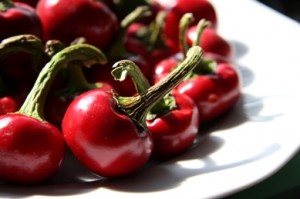 As ginger and soy sauce are to Asian cooking, paprika is to Hungarian cuisine. When I say “paprika”, you almost certainly imagine the spice. The truth is that paprika is much more then the red powder from the shelves of the supermarket.
As ginger and soy sauce are to Asian cooking, paprika is to Hungarian cuisine. When I say “paprika”, you almost certainly imagine the spice. The truth is that paprika is much more then the red powder from the shelves of the supermarket.
In Hungarian, the word “paprika” means both the spice and the pepper itself. Peppers are a very important cooking ingredient. They are plenty of variations, different shapes and sizes and levels of hotness. Each of these peppers has a precise role in the kitchen. We eat them raw with bread and butter, we sauté them, fill and bake them, pickle them, roast them, barbecue them but most importantly just eat them in huge quantities. And that was true even before Albert Szent-Györgyi won a Nobel Prize for isolating vitamin C from the Hungarian pepper.
For authentic cooking it is important to understand what kind of peppers there are and what are they used for. If you do not find these peppers at the grocery store or farmers market, you might try to grow them, or at least try to find a similar variety.
Here’s an index of some of the most common types of peppers used in Hungarian cooking.
Cecei – this is the very basic paprika. It can be hot or sweet and is the basis for plenty of foods like goulash (gulyás), stews (pörkölt), and fish soup (halaszlé). For these types of dishes it’s cooked together with onions until it pretty much melts away. Also, it is the one you can eat with bread and butter, use it in salads or fill it and cook it. It’s also common to see them filled with cabbage and pickled.
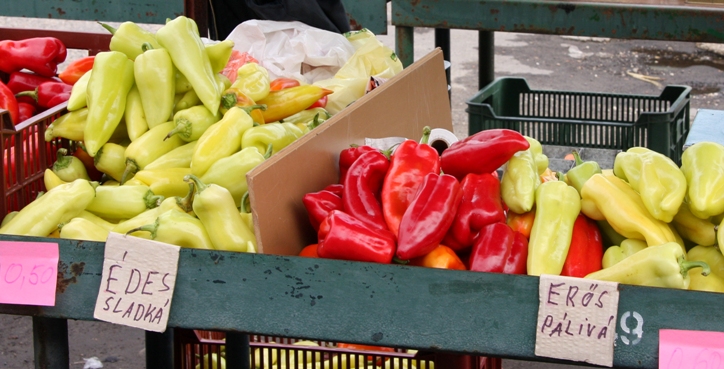
Cseresznye (cherry) – has only a hot version. It can be pickled or dried, and often people make wreaths of the dried ones. You hang it in the kitchen and pull off peppers as you need them to add some fire in your food.
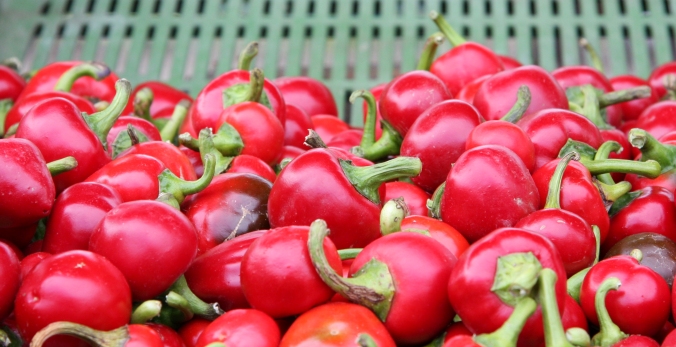
Alma (apple) – is the best pickled. It can be hot or sweet. Either way, it’s great to pickle with cabbage. The sweet variety is also used to make so-called “oily pickles”.
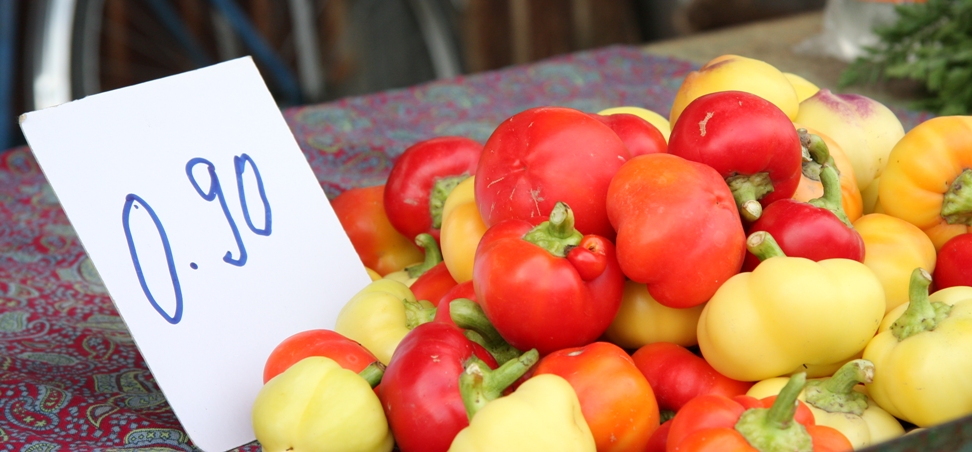
Pritamin – a very sweet pepper, perhaps the closest to the red bell peppers most commonly found in the US. Great for oily pickles or eating raw. You can use it in foods where a bit of sweetness is required.
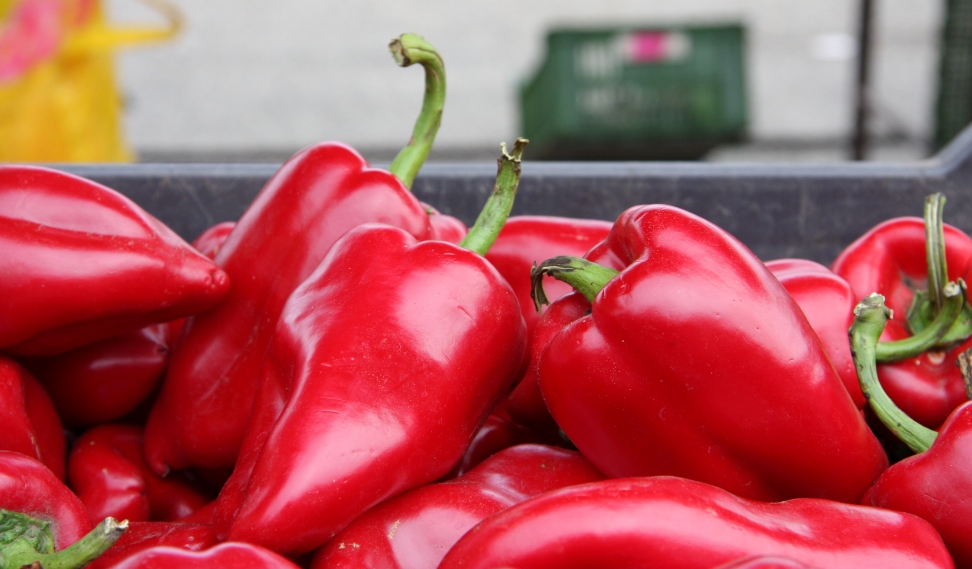
Horn – usually hot. Used pickled or roasted
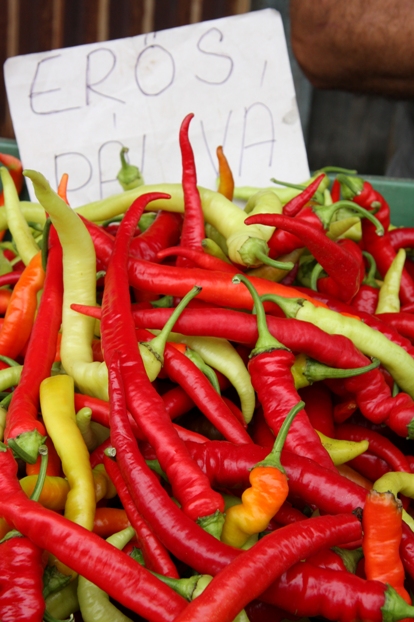
Spice– the dark red gold of Hungary. It is dried and ground to make the famous spice. It can be hot (csípős or erős) or sweet (édes), as can the ground spice. The hot one is also tied into a wreath and then dried. As with cseresznye peppers you can experience hell just by adding a little bit into your soup or meal.
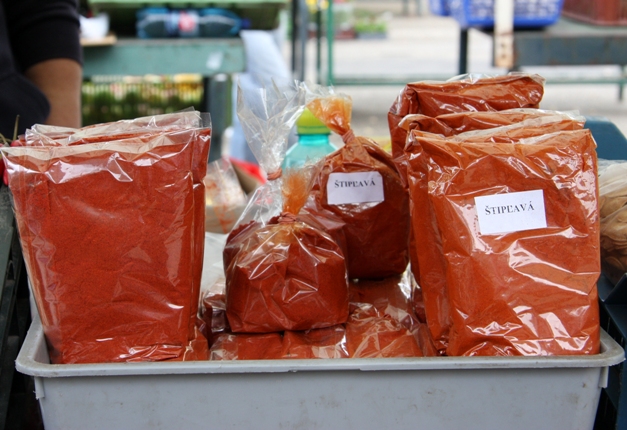
Ground paprika is an essential component to many of the most famous Hungarian dishes. Katy grew up knowing paprika only as a colorful dash across devilled eggs, but here it’s used in quantity, often added to a roux to flavor soups and stews, and gives dishes like paprikás and gulyás their rich color and flavor.
Warning! If you can, avoid the cheapest brands, or best of all, buy directly from a farmer. A few years ago there was a scandal in Hungary because many of the inexpensive brands of paprika actually used peppers from South America!



3 Responses
“best of all, buy directly from a farmer”
A few year ago we were at the small market – 5 or 6 locals with their produces – tomatoes, onions, garlic and such – on a Sunday (Vasarnap – market day from old times) in the center of Dunafoldvar, a small village downstream from Budapest on the Duna. The market is a small remnant of what was once huge gathering.
There was a very old sweet woman selling bags of paprika powder. We bought one, and at the end of the transaction as we were walking away she said – “you will be talking about me”.
It was the best paprika we have ever found – a new introduction to was probably in previous times the only paprika anyone ever used. And of course the woman knew all this. We have retold the story many times, and here I tell it again.
Jack Corliss